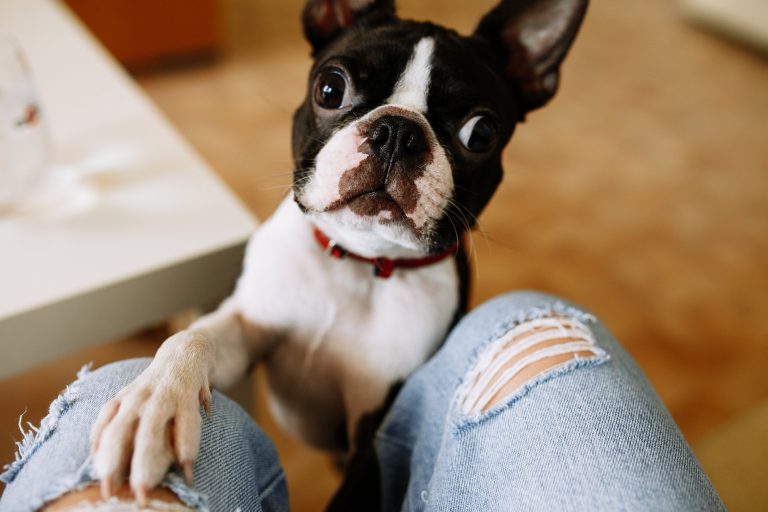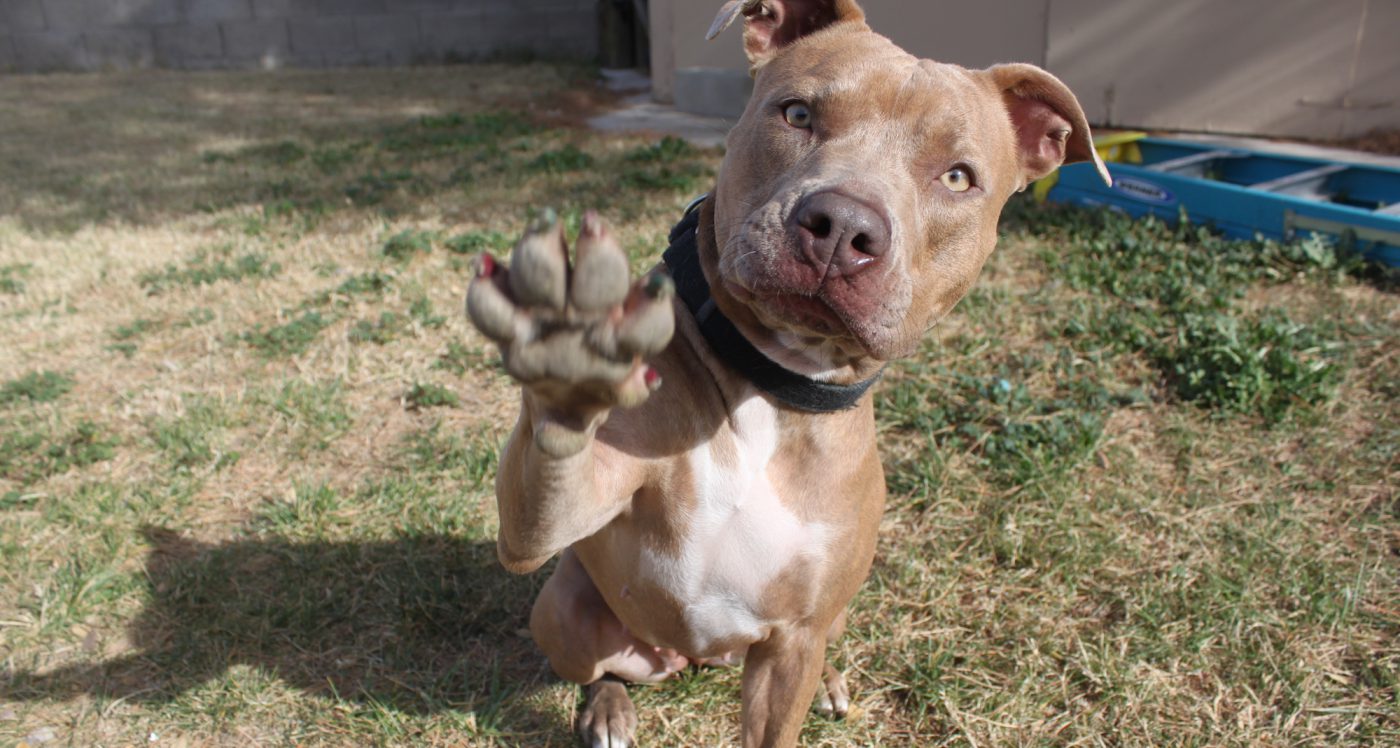Your dog’s paws do some amazing things–they offer protection from rough terrain, they help regulate foot AND body temperature, and provide traction when the zoomies strike. Your dog also uses their paws as yet another way to communicate with you, by gently, or not so gently, placing them on you. Whether intentional or instinctive, pawing is a communicative gesture—even if the message is just the canine brain going “ahhhhh” while being petted. For most of us, the gesture is so endearing, that we reinforce it by offering our own paws, in the form of more petting.
For more on why dogs do the adorably odd things they do:
- Why Does My Dog Get The Zoomies?
- Why Does My Dog Circle Before Pooping/Lying Down?
- Why Does My Dog Roll In (and Eat) Grass?
- Why Is My Dog Howling?
- Why Does My Dog Lick Me/Their Lips?
- Why Is My Dog Staring?
- Why Does My Dog Tilt Their Head?
- Why Does My Dog Scratch the Ground After Pooping?
What is pawing trying to communicate? Animal behavior expert, author, and professor emeritus of Ecology and Evolutionary Biology at the University of Colorado, Boulder Marc Bekoff says to determine what this behavior means you need to know the context and the dynamics of the dog-human relationship. “It could be to express strong positive feelings, it could be to get your attention to ask you for something, or it could be calming,” he says.
Pawing could be a learned experience, says Dr. Andrea Y. Tu, DVM, Medical Director of Behavior Vets of New York. Dogs may repeat the kind action because they have learned it will draw your attention.
Indeed, the attention card is the one that trainer Blake Rodriguez sees dogs playing most when it comes to pawing. “Dogs pawing at us is usually to initiate something, whether it be the human playing, petting them, moving or taking them for a walk, or otherwise engaging with them,” says Rodriguez, founder of Dream Come True K9.
As with many other behaviors, context and corresponding body language are key to understanding this somewhat puzzling, but adorable act.

Hi. What are we doing??
Pawing means affection
Depending on the context, it’s feasible that a dog putting their paw on a person is a way to express affection or offer comfort. If you are petting your dog or sitting close and enjoying your bonding time, a paw likely means your dog reciprocating the love.
Studies show that touch, in this case petting, releases the feel-good hormone oxytocin in both petter and pettee, and in a self-supporting cycle, the calmer the person got, the calmer the dog got. There’s no explicit “I love you” in this exchange, but the message is literally felt.
You may have a dog who will use a paw to “force” you to keep petting or scratching if you make the mistake of stopping too soon. If both pet and owner have positive associations with pawing, then it’s healthy to consider it an unspoken gesture of kindness.
Pawing means feed me, or pay attention (and it likely means you’re rewarding me for pawing)
Affection aside, laying a paw is most likely your dog’s way of getting your attention. They could be saying “give me food,” or “I need to pee,” which is usually supported by other body language. Again, context will give clues about what the message is with a prodding paw.
Whether consciously or not, much of the time pawing is reinforced by the dog owner’s response. The cycle goes like this: dog paws at you, it’s super cute, you give attention by petting them or laughing, dog learns to paw at you next time. While the whole thing is undeniably cute, it’s a good idea to ensure that your dog is not being pushy and demanding attention on their terms. There may be times when pawing is inappropriate, or it may become a too-frequent food begging gesture. The trick is to allow the nice kind of pawing while discouraging the obsessive, or bothersome pawing, and this is where it pays to know your dog’s body language and have established boundaries, so your dog knows that attention, and other good things are on your terms.
First, rule out a real, pressing need that may be prompting a pawing—make sure that your dog is getting enough exercise, outside time, and is being fed at consistent intervals. Providing some indoor mental stimulation in the form of food puzzles or other games may be a welcome addition to their routine.
Sticking to a consistent schedule of food and ample exercise can reduce your dog’s pawing tactics.
Otherwise, if you want to prevent problematic pawing, make sure you’re not rewarding the action with attention. Discourage the unwanted pawing by moving the dog out of your space, says Rodriguez. You can offer a reward when the pawing stops. “Reward by bringing the praise, treat or affection to the area that the dog is in and not by inviting them back into the area that they were being demanding in,” he says.
Of course, if your dog is pawing to alert you to danger or an urgent need, respond appropriately.
Conclusion: Pawing means your dog wants your attention.
If your dog puts their paw on you while you’re spending time together, it’s likely an expression of affection or the gestural equivalent of “pet me more!”









